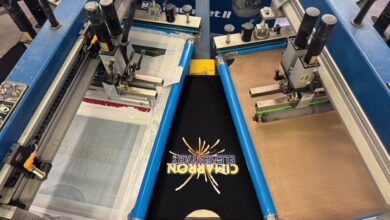There is plenty of difference between white and yellow mesh. White, or more accurately, undyed mesh is actually clear. In most cases, the threads are polyester and are much like fishing line in comparison. The clear mesh threads allow more light to travel throughout, resulting in shorter than traditional exposure times. Though faster exposure occurs, fewer details are resolved in the design. Similar to fiber optics, light travels through the mesh threads resulting in severe undercutting and poor resolution.
Dyed mesh, typically yellow, starts out undyed. It is commonly used on higher meshes resulting in more detail and resolution for image transfer. It is more expensive than undyed mesh because it requires additional finishing in the dyeing process. The dye in the mesh blocks the light from traveling through the mesh. Typically, this requires longer exposure times but with more latitude and exposure flexibility.
That being said, these exposure rules apply to all exposure systems but LED, where exposures are the same for dyed and undyed mesh.
If you’re working with small details, as a general rule, high-resolution, halftone work and/or crisp, clean thin lines are required when dyed mesh is used. Where these requirements are not necessary, undyed mesh is used. We use dyed mesh at 102 tpi and higher.
—GraphicElephants.com



